
The T30 heavy tank has vague information when it comes to ammunition load. Some claimed it’s only able to fire HE, some said it only has low penetrating AP round, while the others describe it as having high penetrating “M111 AP” and “M112 APCR” that can penetrate 276 mm and 320 mm of armor, respectively.
Some Problems
While some of them are true, there is so little explanation on how the T30 acquired such loadout or achieved such penetration, leading to “what if” situation where the shells are configured according to whatever related sources publicly available.
1. It only fires HE shell
The most common misconception about the T30 is that it only has HE shell. Some people claimed so due to the reason that it’s armed with a massive, but low velocity 155 mm T7 gun used for anti-fortification and destroying building, instead of dedicated anti-tank gun such as the 105 mm T5E1 mounted on the T29. Although it’s understandable since many referenced the source from R.P. Hunnicutt’s book; Firepower – A History of the American Heavy Tank.

2. It fires low penetrating AP round
Information available from certain WWII forum usually points out that the 155 mm “AP” fired from 155 mm T7 was unsatisfactory and only resulted in low anti-tank penetration performance from velocity loss. I will explain this later below.
3. “M111 AP” and “M112 APCR” that can penetrate 276 mm and 320 mm of armor
So far, it’s very popular as these rounds are available in World of Tanks, used by both T30 and T95, even goes so far that the T110E3 and T110E4 received a much improved version with E1 designation in the back that can penetrate 295 and 375 mm of armor.
These projectiles in particular are “M111” AP, and “M112” APCR. It’s interesting and confusing at the same time… The only known use of designation “M111” is a 105 mm APFSDS “Hetz” intended to penetrate the Soviet T-72. While the “M112” is actually an AP round of the 155 mm gun.

… It might be good time to explain this thoroughly.
Opening the Ammo Box
The weapon loadouts will be described as detailed as possible. But let’s start from the basics. The 155 mm T7 L/40 is a 155 mm gun of the T30 heavy tank, developed from a shortened 155 mm M1 L/45 “Long Tom”, conceived as early as 14 September 1944. It was developed alongside with the T29 heavy tank armed with 105 mm T5E1 L/65 gun.

The T30 had up to 5 different ammunition available for use. Starting from M107 HE, M110 WP, M112B1 APBC-HE, T29E1 APCBC-HE, and finally T35E1 APCR. The specification will be listed as fired from the T7.

M107 HE
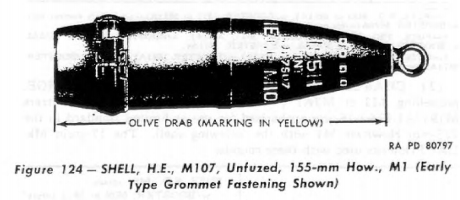
A standard high explosive shell used on all American 155 mm gun in WWII. Weighing 95 lb (43.09 kg), with an explosive filler of 15.13 lb (6.86 kg) TNT, this was primarily used as anti-fortification. It was also a default shell of the T30.
Specification:
Weight: 43.09 kg
Muzzle velocity: 717 m/s
Explosive type: TNT
Explosive weight: 6.86 kg
Fuze: P.D. M51A4
M110 WP (Smoke)
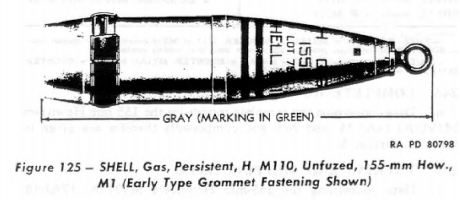
Smoke shell, used to provide smoke screen with 15.6 lb (7.07 kg) of white phosphorous. The ballistics and configuration are similar as the M107 HE.
Specification:
Weight: 44.63 kg
Muzzle velocity: 717 m/s
Smoke type: WP
Smoke weight: 7.07 kg
Fuze: P.D. M51A4
M112B1 APBC-HE
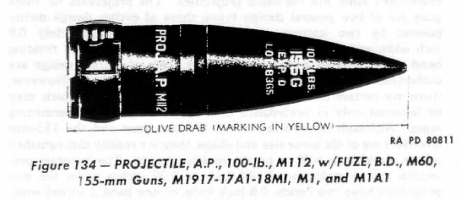
An armor-piercing round. Weighing 100 lb (45.36 kg), with an explosive filler of 1.44 lb (653 g) Explosive D, it was used as an anti-concrete shell, or as an anti-tank in secondary tank destroyer role. The difference between M112 and M112B1 is the cap. Performance-wise, both are identical.
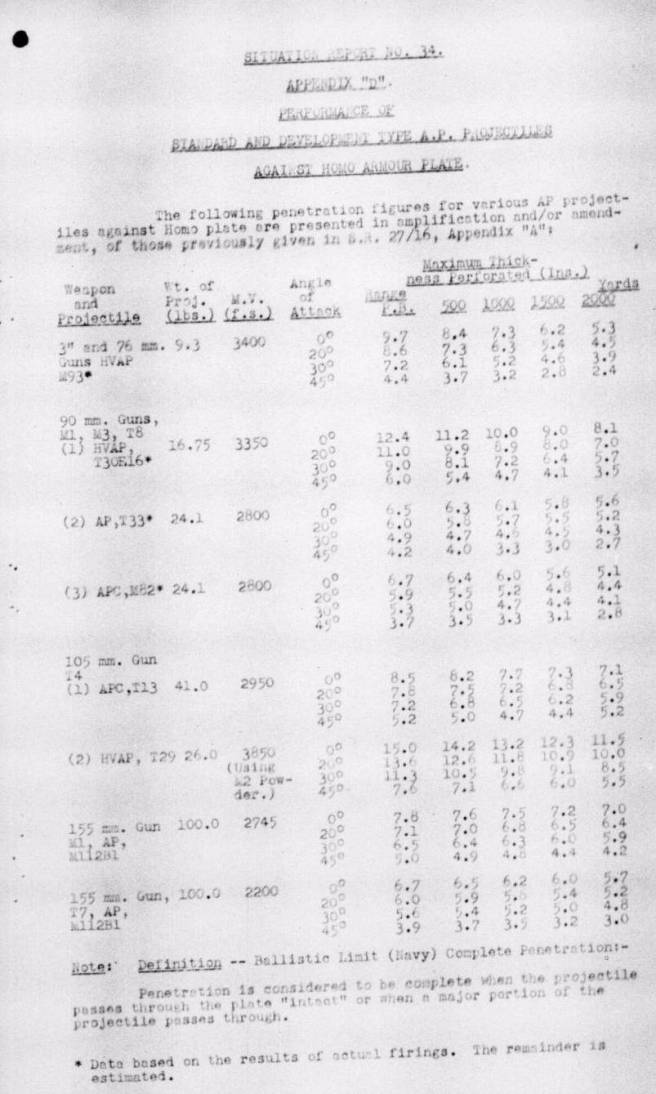
This is a V50 penetration table on various AP projectiles tested by the Americans from the Canadian AFV Technical Situation Report No. 34, showing some well-known shell in service during WWII, including the 90 mm T33, but let’s get to the point.
At the most bottom of the table it is listed that the 155 mm T7 gun fired 100 lb AP M112B1 at 2200 ft/s. The penetration table on the right shows how much it can penetrate a homogeneous armor plate, at only 170 mm penetration from point blank against vertical armor (same penetration of the 90 mm M82). Compared to the 155 mm M1 above it, firing at 2745 ft/s, penetrating much higher at 198 mm. This is because, as aforementioned, the T7 is a cut down M1 gun with shorter gun caliber length.
Specification:
Weight: 45.36 kg
Muzzle velocity: 670 m/s
Explosive type: Explosive D
Explosive weight: 653 gr
Fuze: B.D. M60
T29E1 APCBC-HE
The weapon loadout also specified different armor piercing capped, which is the T29E1. It was an experimental APCBC-HE shell developed for the 155 mm gun specifically to deal against heavily armored targets. The T29 was also known as M112 APBC-HE when the penetrating cap was removed. The explosive mass is 1.5% (653 gr) of the shell weight (100 lb), same as the M112. The muzzle velocity is also similar, depending on which gun fires the shell.

The ballistic limit given is 2533 ft/s against 203 mm at 30° from vertical, measuring the 30° point blank penetration from given ballistic limit results 227 mm. With APCBC slope multiplier against vertical armor, that would mean about 284 mm from point blank range, substantially higher compared to the M112B1. However, this is as fired from M1, not T7. The velocity of the M112B1 is 545 ft/s less when fired from it, & it also applies for the T29E1. The point blank penetration as fired from T7 would be roughly 207 mm. It decreases a lot, but it’s still respectably high compared to only 170 mm penetration of the M112B1.
Specification:
Weight: 45.36 kg
Muzzle velocity: 670 m/s
Explosive type: Exp. D
Explosive weight: 653 gr
Fuze: B.D. T70
T35E1 HVAP/APCR
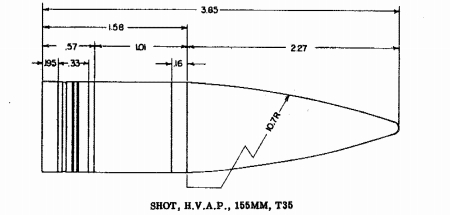
An armor-piercing composite rigid projectile developed for the T30, in response to the Army’s dissatisfaction toward the armor-piercing performance of the 155 mm T7. It was modified from M1’s T35 HVAP, with structural design similar to the 90 mm T30E16/M304 HVAP on the multi-piece carrier construction.

The muzzle velocity as fired from T7 was 3100 ft/s (945 m/s), with the projectile weighing 57.2 lb (25.94 kg, about a kilo heavier than the IS-2’s BR-471 AP).

Penetration figure given from OCM 27195 outlines that the T35E1’s performance is given at 152 mm against 30° armor from 2000 yards, compared with 216 mm of the 105 mm T5E1.

If we’re looking for its vertical point blank penetration, we must extrapolate the numbers from the T35 first. The weight of the T35 is 56.5 lb (25.62 kg), and Muzzle velocity at 3630 ft/s (1106 m/s).
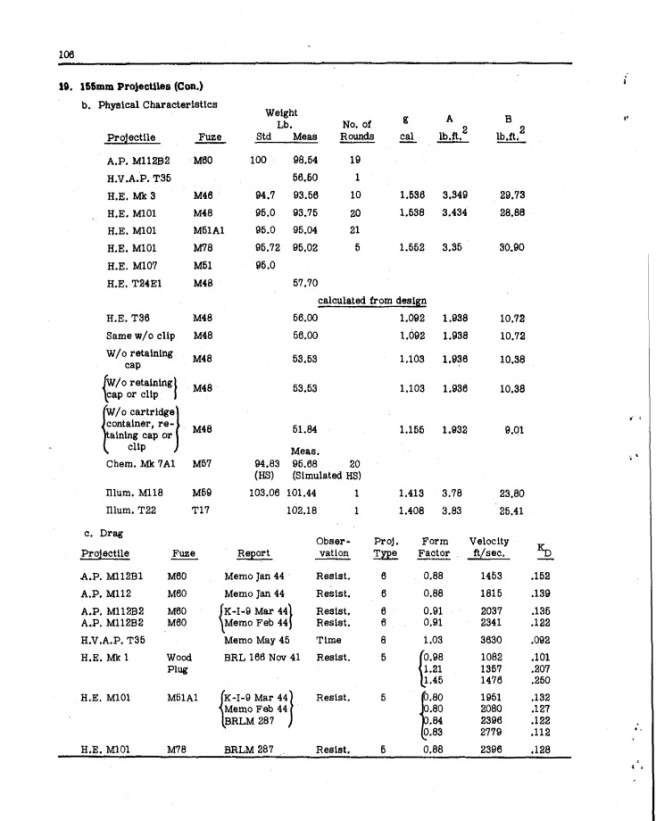
Ballistic limit of the T35 HVAP versus rolled homogeneous armor:
0° – 14.00 in (355 mm) – 3365 ft/s (1031 m/s)
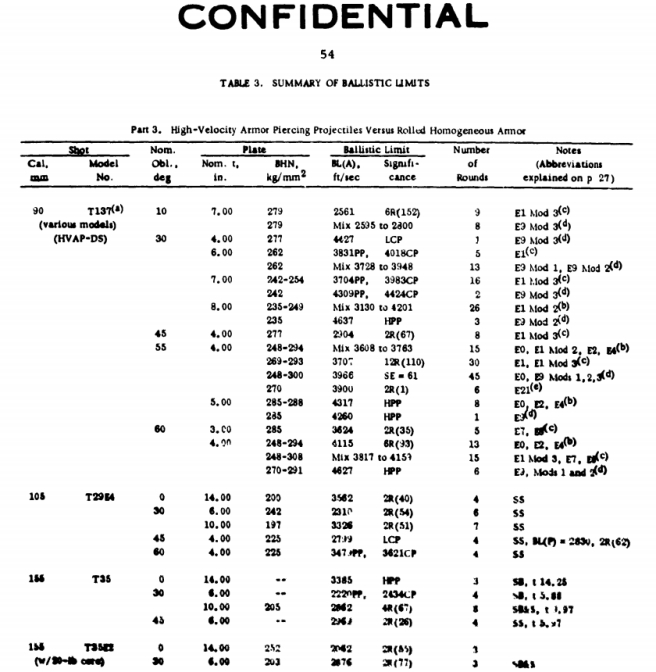
So, we know the ballistic limit of the T35 at 1031 m/s. Measuring the penetration to point blank range should give around 392 mm of penetration. Now, if we decrease the velocity from 1106 m/s of the T35 to 945 m/s of the T35E1, and add a little bit of weight to it, the final result is 316 mm of penetration.
Specification:
Weight: 25.94 kg
Muzzle velocity: 945 m/s
Core diameter: 60 mm (est.)
Core mass: 6.8 kg
Core type: Tungsten carbide
And there we have it, all of the confirmed ammunition the T30 has. Be aware that the measurement is not 100% accurate as there is no exact penetration table found on the T29E1 and T35E1 yet, so using DeMarre equation is an alternative to measure the numbers manually.
World of Tanks could work a little bit on renaming the projectiles. Instead of using “M111” AP and “M112” APCR, they could change it to “M112 / T29E1” AP and “T35E1” APCR. It’s surprising though that the APCR penetration is marginally correct, at 320 mm of penetration. On the other side, War Thunder has confirmed since 2 years ago that the T30 will be added sometimes in the future. I think the T30 could be introduced with overall more realistic features, and placed at appropriate BR with all the ammunition it has.
The T7 loadouts were actually already available from the M1 Long Tom since the beginning of the development. That means if the Long Tom had access to M112B1 APBC-HE, T29E1 APCBC-HE, M101 HE, and T35 APCR, so did the T7, but with overall worse performance due to having shorter barrel and chamber capacity.
Sources:
- Development History of the Heavy Tanks, T29 & T30, 1945
- Royal Artillery Liaison Letter to the War Office, 1945
- RAC – AFV Technical Situation Report, 1944 – 1945
- TM 9-1901 – Artillery Ammunition, 1944
- AD800469 – Aerodynamic Data for Spinning Projectile
- AD301343 – An Analytical Study of Data on Armor Penetration by Tank-Fired, Kinetic Energy Projectiles, 1958
- R.P. Hunnicutt: Firepower – A History of the American Heavy Tank, 1988
P.S.:
It’s been almost a year since the last time I wrote an article in TAP. Good to be back again. Not a Russian translator anymore (Seb already assigned someone with better translating skill), but as a regular author writing some articles.
